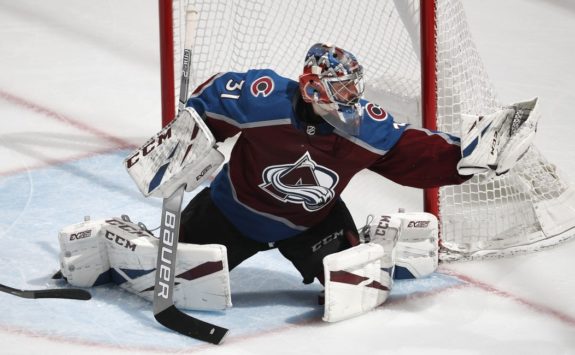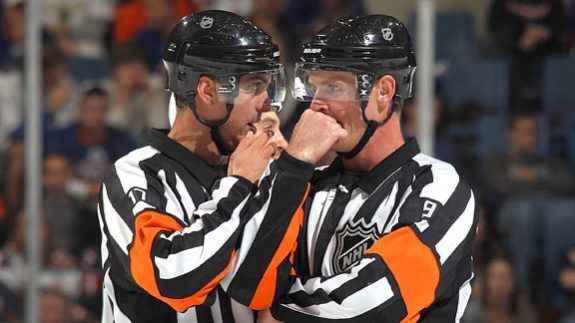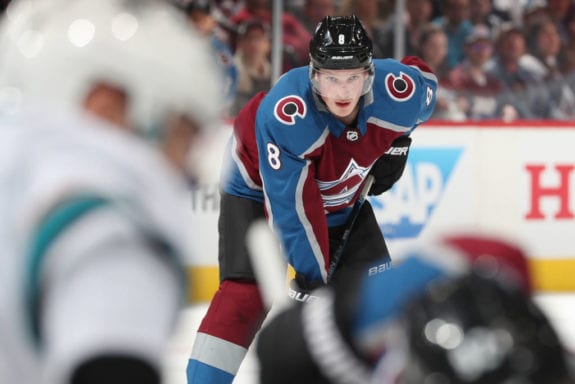As the 2021-22 campaign approaches, expectations for the Colorado Avalanche are once again riding high. The team is favored to win the Stanley Cup, over both the defending champion Tampa Bay Lightning and the Vegas Golden Knights, who ended Colorado’s season in the second round last year. Fans and bookmakers alike are showing a tenacious willingness to look past their third consecutive early exit from the playoffs.
The Avalanche were favored to win the Stanley Cup at the start of last season too and they seemed intent on living up to that promise. Colorado won the President’s Trophy with a 39-13-4 regular-season record and opened the playoffs by winning a franchise-best six consecutive games. Then the rails came off.
What Went Wrong in the 2021 Playoffs
The trouble really began in Game 2 against Las Vegas. Goaltender Philipp Grubauer’s 39 saves, including 15 in the third period, were enough to overcome Colorado’s anemic 22 shots on goal, force overtime, and secure the win. But the tenor of the series had changed.

“Grubi bailed us out today,” said Colorado forward Mikko Rantanen after the win. “He had a really, really good game. He’s basically the reason why we got to OT.”
After that, the Golden Knights outshot the Avalanche 43-20 in Game 3 and 35-18 in Game 4. In Game 6, the deciding game in the series, they outscored the Avalanche 6-3.
At first blush, it appears Colorado’s offense just went cold at the wrong time. After averaging five goals per game in the first six games of the playoffs, the Avalanche averaged only two goals in their final four games. Fans and pundits were quick to jump on Avalanche superstar center Nathan MacKinnon and the rest of the offense for their failure to produce when it mattered.
But was it a failure of the offense to produce, or was it a failure of the defense to secure the puck and allow the team to generate scoring opportunities? The pivotal Game 5 with Las Vegas tells the story. After the Avalanche took a 2-0 lead into the third period, three defensive zone turnovers, including one in overtime, lost the game and ultimately the series.
With a more physical brand of hockey prevalent in the post-season, the Avalanche defensive core didn’t do enough to protect their forwards, and the puck, in five of the six games with Las Vegas, and it cost them their season.
The Playoffs Are More Physical
Ask a fan about officiating in the NHL playoffs, and invariably you’ll hear a rant about referees swallowing their whistles. Is it true? Are there fewer penalties called in the post-season? The answer is complicated.

The average number of penalties per game in the 2021 playoffs was actually higher than the average penalties per game in the regular season. (3.4 penalties per game in the postseason vs. 3.1 in the regular season.) But that’s only part of the story.
In addition to a few outlier games in the 2021 playoffs (the Islanders seemed to live in the box), the majority of penalties were called in lopsided games. In other words, when one team was winning big, the other team started committing penalties out of frustration or to send a message for the next game of the series. In closer games—games with a one or two-goal differential—the number of penalties called was very similar to the regular season.
That’s important because playoff games average 10 -14 more hits than regular-season games. With more physical play, there should be more penalties. There are not.
Avalanche Defensemen Are Scoring Machines
The Avalanche have a tremendous defensive core with incredible goal-scoring potential. Three of the NHL’s top 25 defensive points leaders in 2021 played in Colorado, the most of any team: Cale Makar (44 points), Sam Girard (32), and Devon Toews (31). But on a team with Nathan MacKinnon, Rantanen, and Gabe Landeskog, how important is defensive firepower?
Barring injuries, it’s hard to imagine the Avalanche not making the playoffs. General manager Joe Sakic should be building his team for the physical play of the postseason, focusing more on true defensive skills—protect the puck, protect the forwards, clear the zone—than on scoring from the blue line.
You Can’t Teach Size and Speed
There’s an old adage in sports that you can’t teach size and speed. The Avalanche have plenty of the latter, but they’re lacking the former. Those top three defenders, while all brilliant hockey players—Makar is a once-in-a-generation talent and the Avalanche are very fortunate to have him—are not an especially big group. Girard measures 5-foot-10, Makar 5-foot-11, and Toews at 6-foot-1.

When you look at the league leaders in hits last season, no one on the Avalanche cracks the top 100. While an enforcer-style of hockey is anachronistic—NHL rules have evolved over the last two decades to guard against unnecessary injury—hockey is still, at its core, a physical game. Goal scorers can only flourish on a team with a strong defense, a defense that makes its presence on the ice known.
Last year’s roster did have two impactful big men on defense when the season started. Ryan Graves (6-foot-5), who led all NHL players in +/- in the 2019-2020 season, was a reliable force in the defensive zone. It was a role that needed filling after the Avalanche traded Nikita Zadorov the season before. (That trade worked out well, as Brandon Saad was the Avalanche’s second-leading goal scorer in the 2021 postseason, but Zadorov’s presence was clearly missed, particularly in the playoffs.)
The other big man on the roster was 6-foot-4 Erik Johnson. The “Condor,” as he’s known to fans, missed all but four games of the 2021 campaign with injury. Johnson has had a hard time staying on the ice throughout his career. In the last 10 seasons, Johnson has played more than 60 games only five times. If Johnson is once again bitten by the injury bug, where does that leave the defense? This is doubly concerning with an injury-prone Darcy Kuemper now in net. (Colorado traded 6-foot-2 defenseman Conor Timmins to secure Kuemper in the wake of Grubauer’s departure for Seattle. A necessary move, but one that further weakened the impact of the Avalanche defensive core.)
Sakic elected to protect Girard rather than Graves in the expansion draft—Graves was traded to the New Jersey Devils to extract some value from him before Seattle could claim him in the draft—and that may come back to haunt the Avalanche. Sakic has made other moves, and there are other players—6-foot-6 rookie Keaton Middleton, for example—who have the potential to fill some of this gap, but they are largely untested.
The Avalanche are deserving favorites entering the 2021-22 campaign, but if they have an Achilles heel, it’s their lack of experienced size and physicality on defense, especially when it comes time for the playoffs.